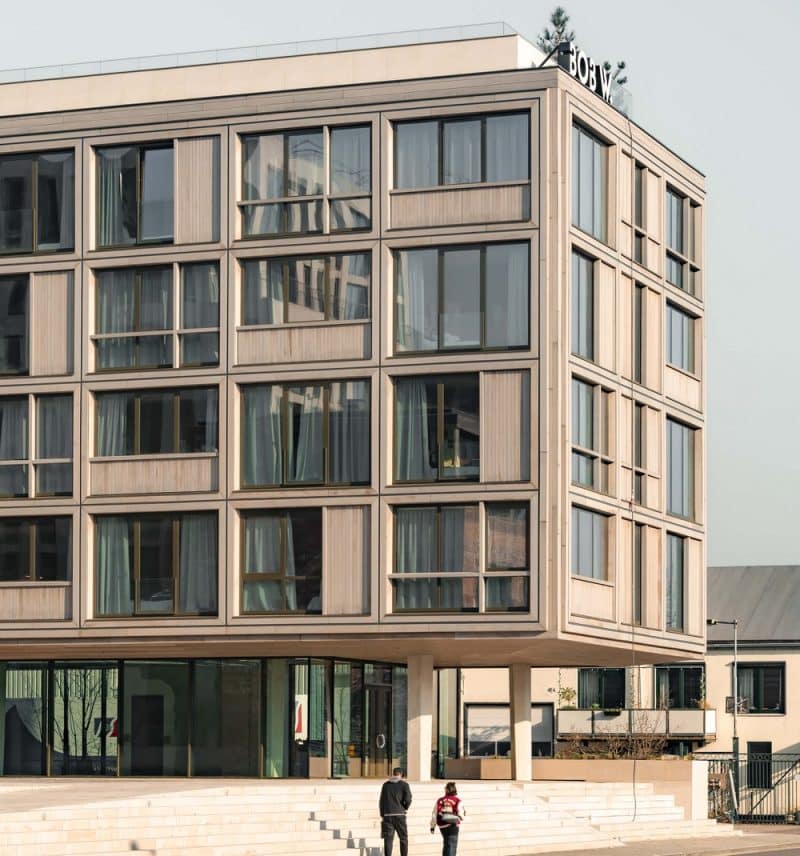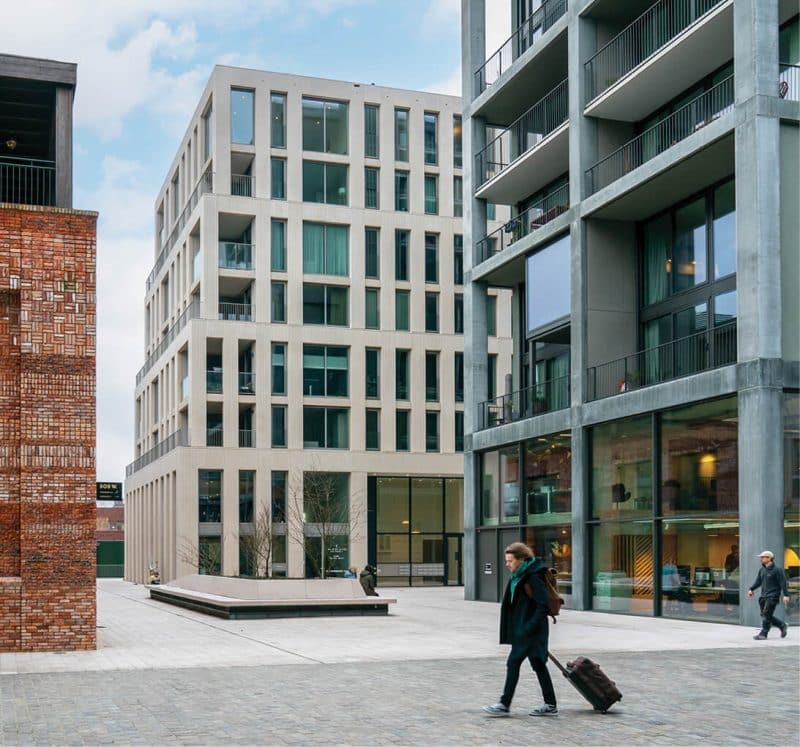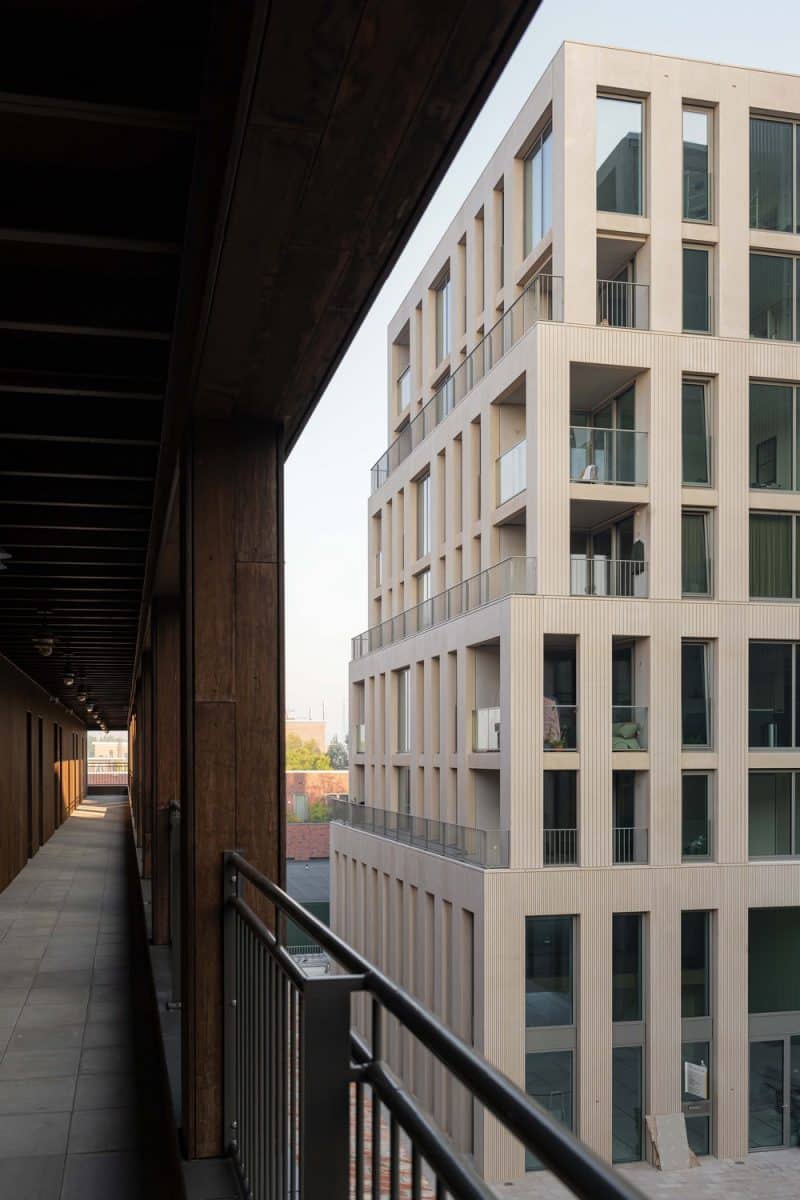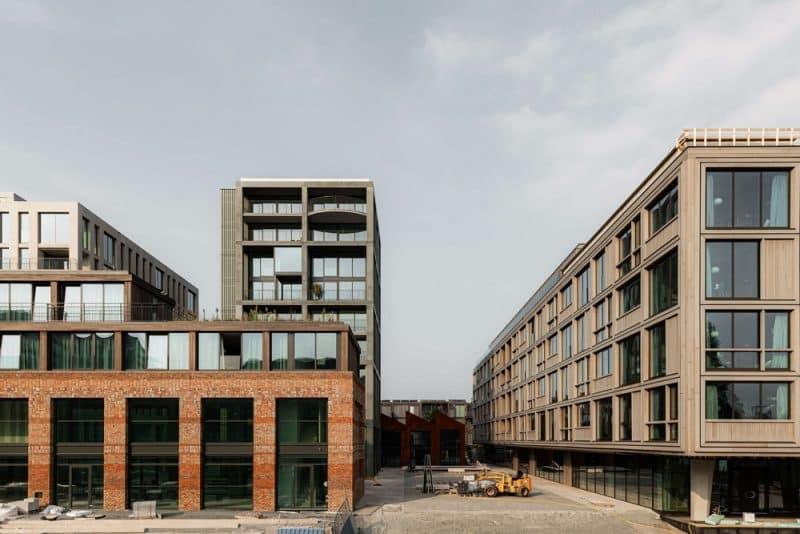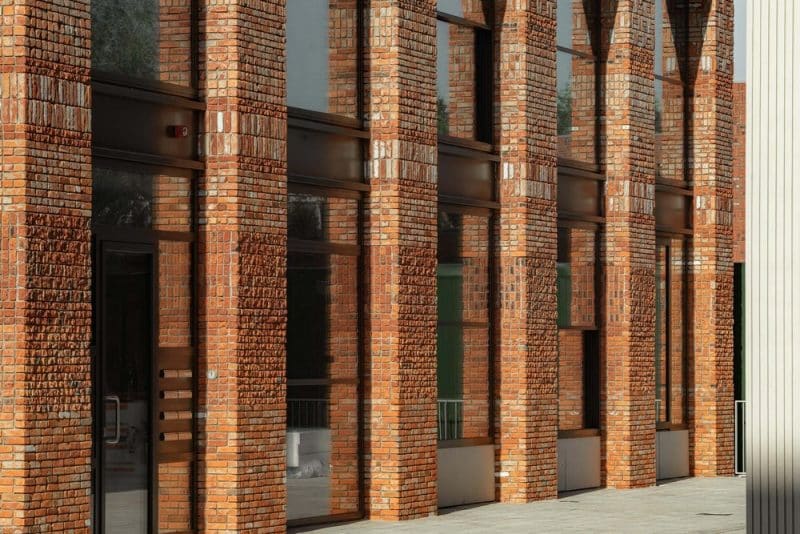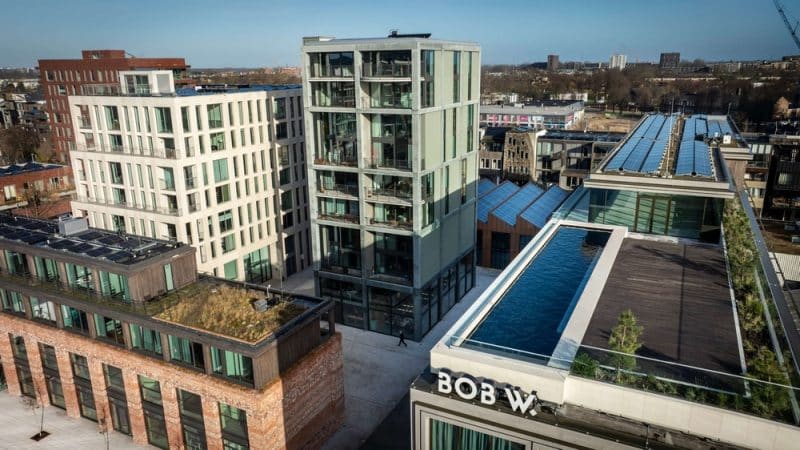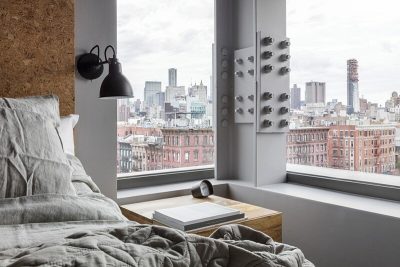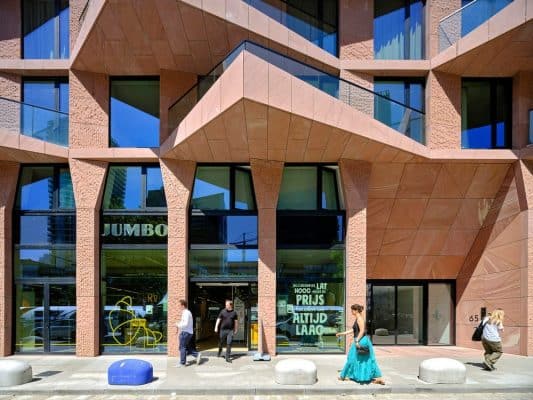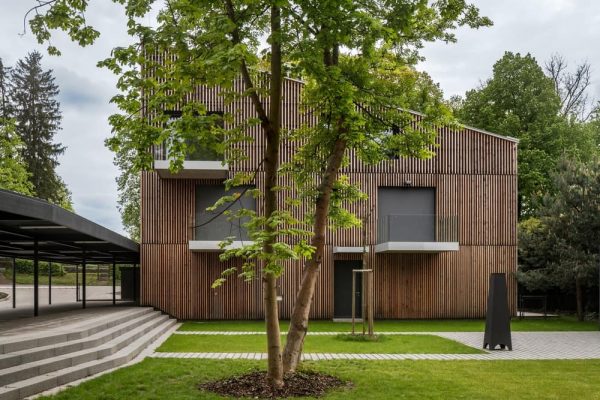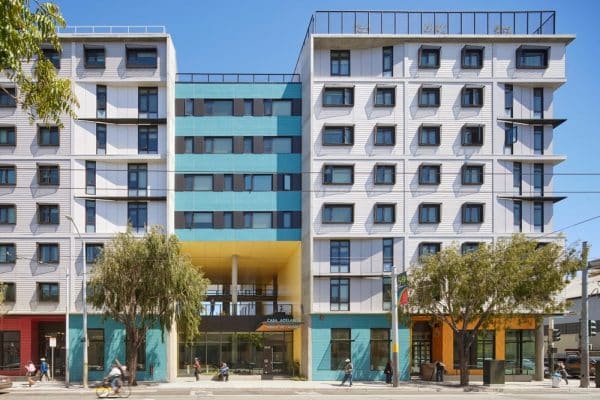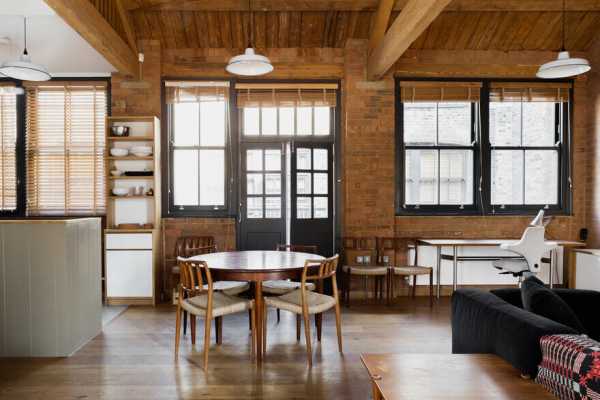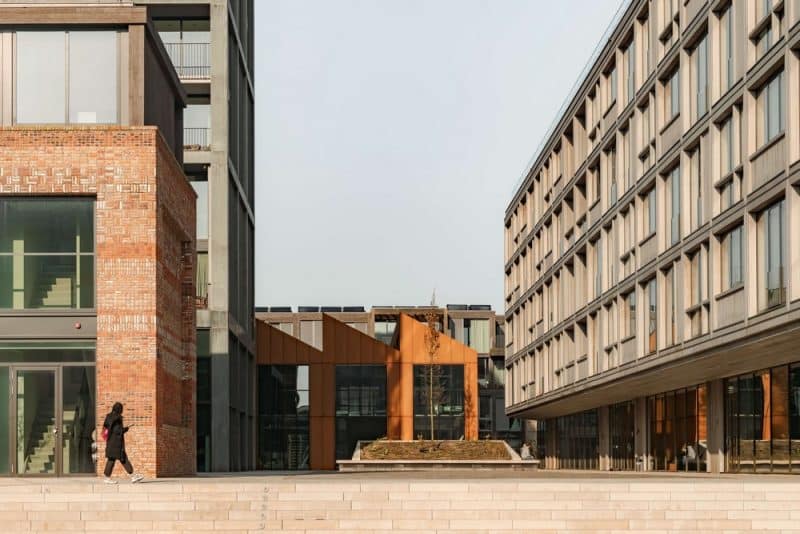
Project: Republica Amsterdam
Program: Housing, Office, Commercial, Short-stay apartments / Hotel, Cafe, Restaurant
Design: Marc Koehler Architects, Amsterdam
Design (block 3): Loer Architecten, Rotterdam
Project architect: Marc Koehler, Eric Thijssen & Carlos Moreira
Lead architect: Eric Thijssen
Landscape architect: Dakdokters
Building Physics & Structural Engineer: Pieters Bouwtechniek
Building Physics: Cauberg Huygen
Contractor: Vink bouw
Fire Safety: DPA
MEP: Techniplan, INNAX, Spectral
Location: Amsterdam, The Netherlands
Year: 2017 – 2024
Photo Credits: Sebastian van Damme, Maikel Samuels
The completion of Republica in Amsterdam-Noord marks a new chapter in the transformation of Buiksloterham, from an industrial park to a vibrant work-living community. We are proud to show how Republica has evolved into a new circular, and publicly accessible urban village.
What does sustainable collective living in the densified city of the future look like? That was the question behind Republica, one of the pioneer projects in the former industrial area of Buiksloterham in Amsterdam North, which is being transformed into a new piece of circular city. The answer is a functionally mixed and connected ‘urban village’ with a building density of FSI 3.3 and a remarkably high quality of housing and public realm.
Loft architecture
The loft architecture with large windows, high ceilings, large floor spans, and robust materials, references to the industrial language of the Amsterdam harbours, while the natural stone plaza and grand stairs have a cheerful, almost Southern European quality. The restaurant building has a monumental brick facade and slightly recedes from the building line; the resulting space, facing south, is furnished with wide seating steps: the ‘Spanish steps’ of Buiksloterham.
The given closed factory plot of 80m x 80m is opened up to the surroundings and carefully rearranged into an ensemble of six buildings, squares, and alleys, connecting them to the neighbourhood through two bridges and monumental steps. It includes a lively mix of functions: apartments (available for rent and purchase between 60-130m2), including a tower with ten Superlofts, commercial and office spaces, a gym, two café-restaurants, and a mid to long-stay apartment-hotel. On the roof, there will be a sauna club with a pool overlooking the IJ lake.
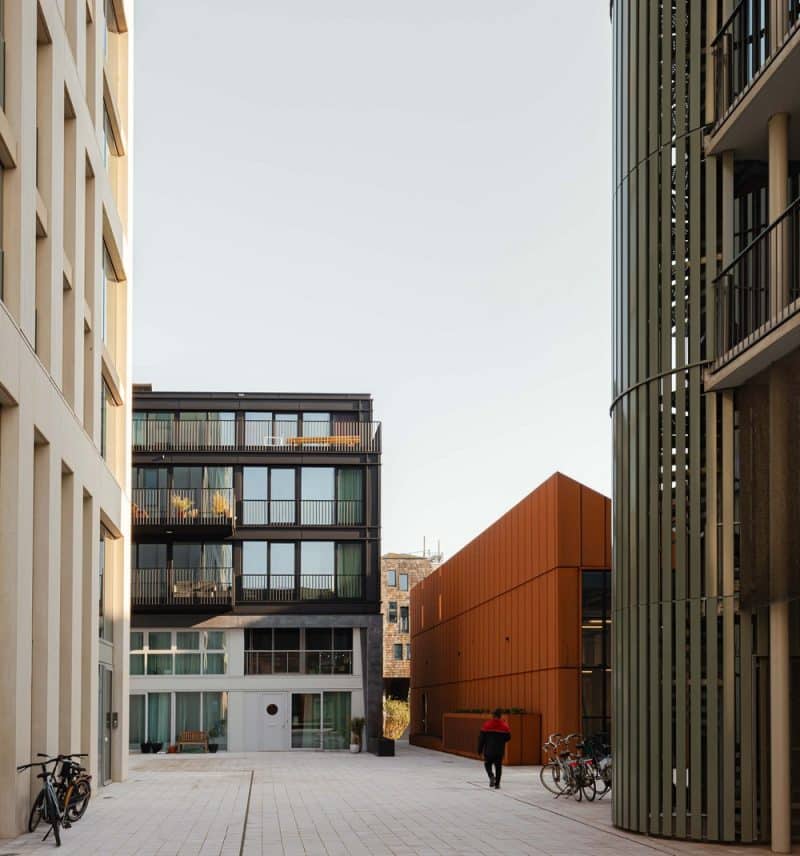
Open Building and Circular Economy
The soft green concrete tower with adaptable core & shell Superlofts allows residents to radically customize their interiors. It marks the central ‘village square’ paved with demountable natural stone. The white residential block is made of timeless, specially profiled (partly recycled) concrete. The apartment-hotel building has a wooden facade, coming from a source of renewable materials. The warehouse office building is made of recyclable and durable Corten steel and due to its extra clear height, it is also suitable for manufacturing. The brick facade of the cafe and co-work is made of recycled bricks, which are manipulated in surface texture and laid in different patterns. Each building thus has its own story, structure, function, form, and sustainable facade finish, and can therefore be adapted independently of each other in function, layout and expression (Open Cities).
Most buildings are flexibly divisible due to the separation of support and fit-out systems, large spans, high ceilings, large windows and demountable material systems ( the results are what MKA calls Open Buildings and Open Systems). They ‘grow’ with the times and thus last longer, likely resulting in significantly less demolition and construction waste in the future. The timeless circular and social architecture that is the result and MKA strives for is inspired by the so-called ‘Open building concept’, a movement founded by the late John Habraken in the 1960s.
Energy coöperative
As part of circular Buiksloterham, Republica is a testlab for sustainable construction and living, selected by the City of Amsterdam and subsidized by the EU. It is an energy-positive city plot (meaning the solar panels and ‘Geothermal well’ generate more power than is needed). An innovative energy cooperative has been established to generate, store, and exchange sustainable solar energy between residents using a micro-grid network, ‘neighbourhood battery’ and Geothermal well.
